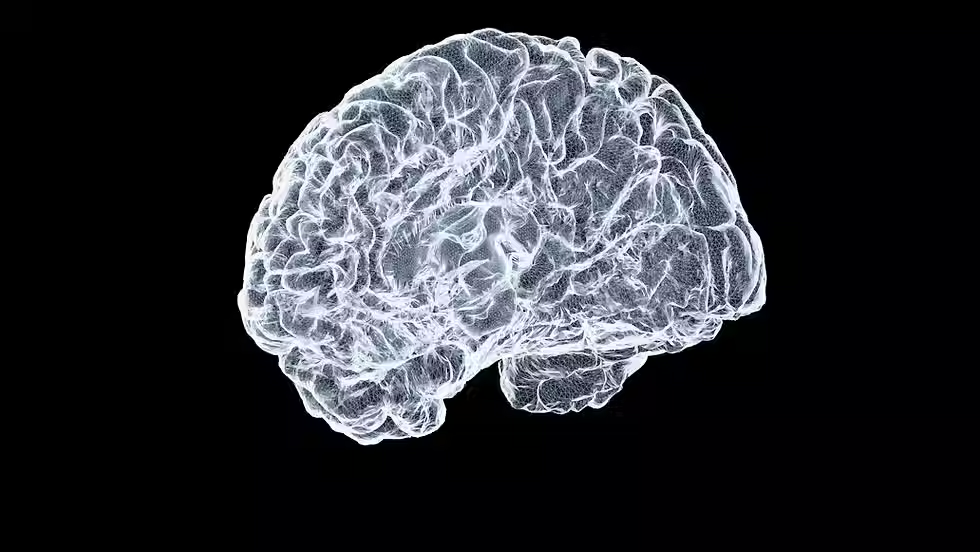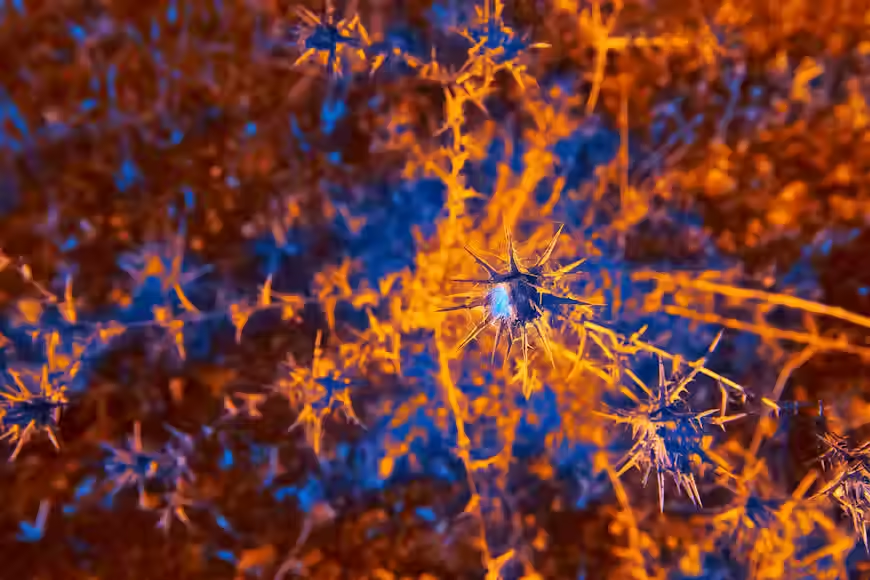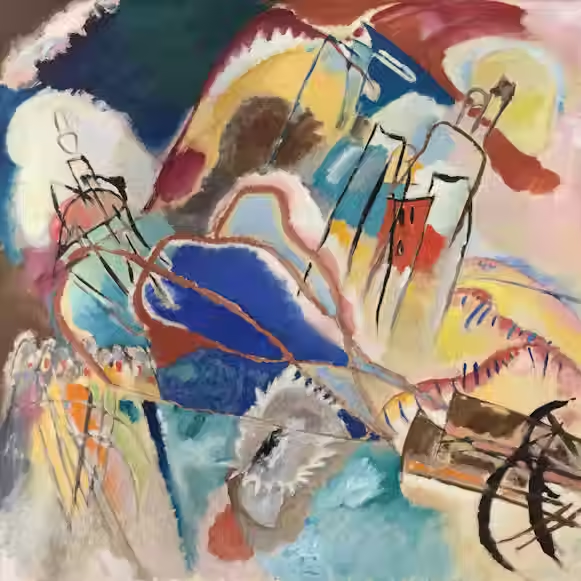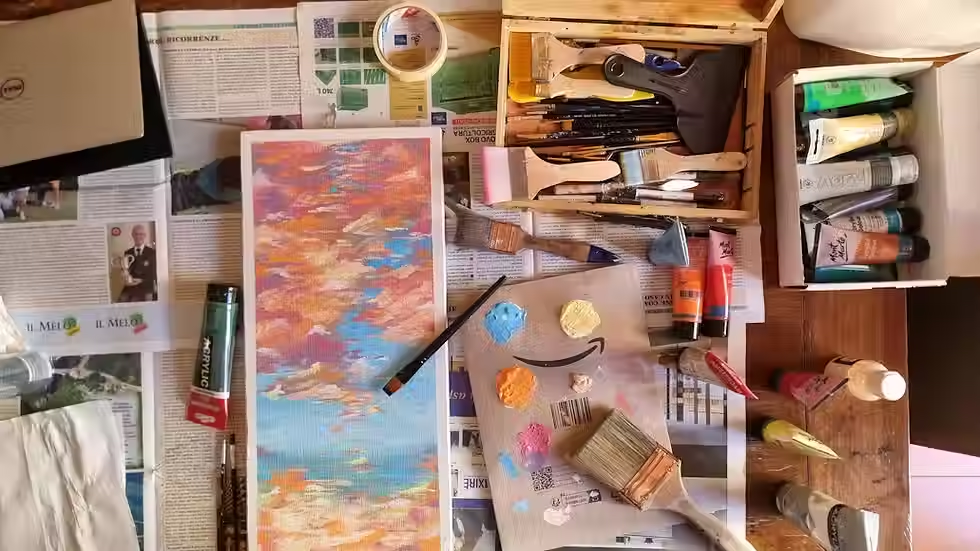Inside the Art-Loving Brain: How Neuroaesthetics Explains Our Response to Beauty
- Sutithi Ghosh
- 2 days ago
- 6 min read

It’s crazy how we can experience the exact same thing, but turn it into completely different stories! Our eyes and ears pick up electrical signals, and our brain interprets them based on our expectations. We don’t see reality—we see ‘our’ reality. The five senses help us understand and narrow down the focus so the perceptions become clear.
For example, a relative of ours, who lives in wine country, California, once took us out of her house and said, “Look at those golden hills!” When we saw them, we saw brown, dead, withered stuff. We were looking at the same stuff. Neither one of us was right or wrong. But that isn’t the thing. The point is to describe what someone sees, feels, tastes, smells, or hears as something deeply personal. It’s about perception. The same goes for perceiving art.
Well, most of us have experienced the awe every time we come across a timeless creation like the Mona Lisa, or a sunset photo sending a shiver down our spine, or when we stand in front of a massive canvas of an abstract expressionist like Mark Rothko! How do we feel that mysterious thing that happens inside? How can we describe the pull in our minds? This can be described by the concept of neuroaesthetics. It helps us explore how our brain observes, generates emotional responses, and even craves beauty.
Let’s take this fascinating work of the art-loving brain a bit further while we talk about a rare brain condition called synesthesia. It is like blended perception—here multiple unrelated senses work together, like hearing colors or tasting sounds. This is called seeing and hearing together in art. It is believed that Vincent Van Gogh, the gifted painter, had this rare syndrome of blended senses.
Sounds incredible? Wish to know more about the art of perception and synesthesia? Then join us to explore what happens inside the art-loving brain!
What Is Neuroaesthetics?
In 1999, neuroscientist Semir Zeki observed something interesting about the brain’s response to art and beauty, which was later coined as neuroaesthetics. It connects neuroscience with creativity, going deep into the layers of perception, and feeling to know how we sense art and creativity through brain signals.
How the Brain Rewards Us with Emotional Signals

When we see or hear something beautiful or extraordinary, our brain activates the medial orbitofrontal cortex—the area that is linked to perceiving music or even solving mathematics. So, what happens here? When we start to appreciate Rothko’s massive acrylic painting canvases, or Van Gogh’s vibrant strokes, our brain literally rewards us with an intense good feeling.
The moment the brain senses colors and shapes in an art piece, it translates them into instant emotions. But the brain responds differently to what we see: when we see human portraits, it activates the area that helps us recognize people; landscape paintings light up the area that deals with places and surroundings. Artists exploit these neural signals intuitively to make the audience connect with their works.
The Mirror Neuron System: Can We Feel the Brushstrokes?

When we see any artistic piece that shows movement, like a dancer in mid-spin or something like that, our brain almost copies the action through its mirror neuron system, making us feel the act. It feels as if we are creating the brushstrokes ourselves—that helps create an empathy with the artist’s creation.
Brain Recognizes Labels: If You Believe it – It is Beautiful!
Your belief shapes perception. If the viewers think that a work is a real masterpiece, the brain starts to work and react with more emotional cues—even if the piece is a reproduction of the original! That shows the brain acts on our belief systems and makes something appear more beautiful.
Art and Synesthesia: What Happens When Artists Hear Colors and See Sounds
An amazing thing happens when someone sees sound or hears colors! This is where art and visual perception intersect with synesthesia—leading to a fascinating condition of blended senses. Sometimes it involves feeling like tasting visuals too! Wassily Kandinsky, an eminent abstract expressionist, had a rare insight to hear colors and see music in them. He claimed that his paintings were born from these mixed senses. For these artists, beauty is not confined to a particular sense but gets mixed with multiple perceptions.
These few lines show how the famous Russian abstract artist and theorist Wassily Wassilyevich Kandinsky exactly felt …
“Now disappearing slowly in green grass. Now sticking in gray muck. Now disappearing slowly in white snow. Lay long: big long black reeds.”
- Kandinsky, from his collections of poems ‘Sounds’

The Fascinating Intersection of Neuroscience and Art
Color Symbolism in Art and Brain Chemistry
We know that certain colors trigger curious neurological responses and help us decode hues in a better way—cool colors reduce heart rate and promote calm, while warm colors trigger alertness and intensify moods. Artists have played with these color chemistries long before neuroaesthetics was introduced.
Brain Loves Balance: The Art of Symmetry
We always like to see things in symmetry, like recognizing symmetrical faces and compositions as something more acceptable than asymmetrical ones. Our brain enjoys order in patterns, which is why geometric shapes and architectural harmony look so pleasing to us.
What’s so Cool about the ‘Peak Shift’ Effect?
We often get attracted to bold colors or sharper lines—this is quite common for visual perception and art. This shows why abstract artworks or cartoon strips look so attractive to us. Our brain is tuned to catch anything exaggerated.
Art, Storytelling, and Memory
Any compelling narrative in paintings or sculptures activates multiple response centers in our brain. That is how the experience forms memory. We always prefer artworks and creations that have unique stories to tell.
Cross-Modal Art Experiences and Playing Music
Art and music have a deep connection, as we often prefer music while viewing art. It stimulates the brain neurons, activating overlapping pleasure centers in the brain as confirmed by neuroscience findings. Some galleries and museums use background musical scores or soundscapes to enhance the visual art experience.
The ‘Aha!’ Effect in Visual Art
Think about the Eureka moment of Archimedes! It is almost similar to an ‘Aha’ moment for the viewers—when they suddenly decode the hidden meaning in an artwork. Something magical happens inside the anterior superior temporal gyrus in the brain—the same area known for problem-solving and perception. The brain senses a sudden burst of neurological signals.
Why Is It Important to Feel Art through a Scientific Lens?

Art Therapy and Mental Wellness Work Together
When we decode art or start to feel the inherent message, it creates a deeply satisfying feeling like busting stress and activating reward centers in the brain. These experiences are used in clinical art therapy.
Impactful Designs Lower Cortisol Levels
Neuroaesthetics works wonders when architects and designers use these insights to design soothing hospital lobbies, motivating entrances to a school, or inviting public spaces. Impactful designs lower cortisol levels and boost positive feelings.
Learning with Artistic Visuals Helps to Memorize
Catchy visuals with stories make lessons more enjoyable and memorable; the brain remembers anything that is related to beauty and aesthetics.
Balancing Science and Soul
It is better to remember that we are not trying to oversimplify artworks by reducing them to mere brain scans. Any artistic creation means more than a neural activity—it involves memory, human experience, and cultural history. Neuroaesthetics addresses this co-existence by adding a unique perspective to it.
For people experiencing synesthesia, colors can trigger sounds, and music can appear as dancing patterns. We have already mentioned Kandinsky and his hearing colors; there is another composer, Alexander Scriabin, who blended light and sound in his symphonies. That brings us to believe that art is more about synthesis, crossing senses; it was never one-dimensional.
Brushstrokes of Neurons: Where Art Meets the Brain

The next time a painting mesmerizes you, think about what happens inside the art-loving brain—how it rewards you, triggers responses, and captures beauty. Neuroaesthetics holds the key to this mystery—while synesthesia reminds us that art can even cross senses, creating infinite paths to experience beauty. From Kandinsky’s color-sound canvases to Van Gogh’s frenzied creations to Scriabin’s synesthetic music, it resonates across multiple sensory levels.
To sum up, art is both the poetry of imagination and the brushstrokes of neurons. Perhaps this synergy is what makes it so beautiful—reminding us how deeply beauty is wired within us. After all, we are not just meant to survive on earth, but to feel with a passion and depth no other species can!


